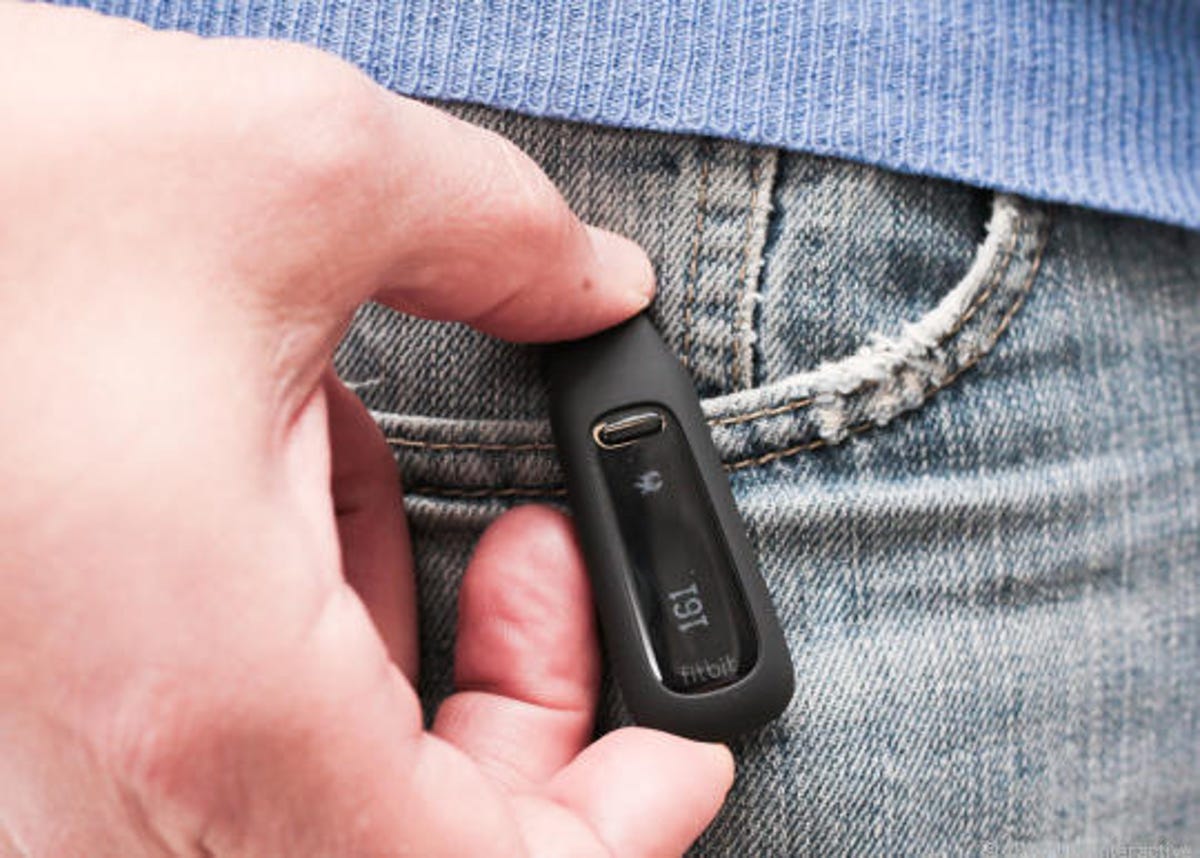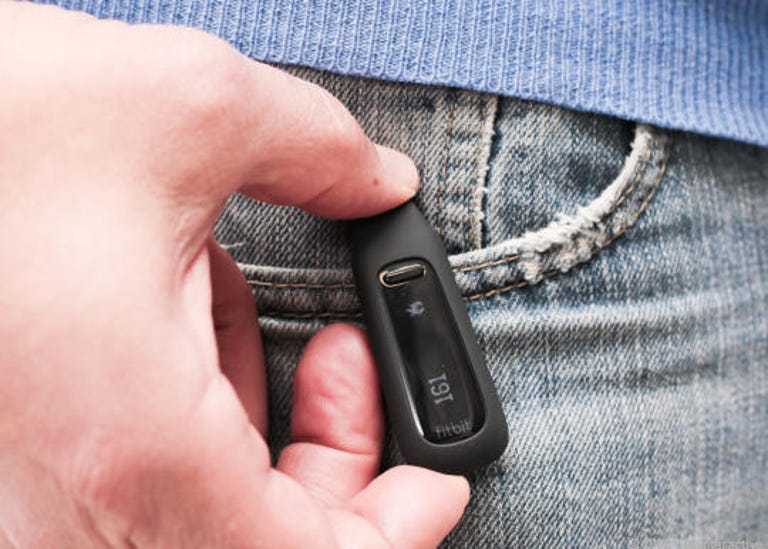 Why You Can Trust CNET
Why You Can Trust CNET Fitbit One review: Powerful fitness tracker, weak design
The Fitbit One can keep tabs on how well you rest, how active you are, how much you eat, and how many calories you burn, but it has a questionable design.
The $99.95 Fitbit One is one of the most advanced fitness trackers money can buy. Besides measuring steps, this gadget can record how many stairs you climb, the calories you burn, and even the quality of your sleep. Its clippable design, however, isn't as convenient or secure as competing wrist-style devices such as the
The Good
The Bad
The Bottom Line
Design
If you've owned or played with Fitbit's past devices such as the original Fitbit tracker and
The idea is to use the clip to attach the One to clothing, either a belt, pants pocket, or shirt. Once clipped on, the gadget records your daily activity. There's just one button on the One. Pressing it toggles through the product's various screens -- the time, steps, stairs, distance traveled, and calories burned through activity. A final screen shows a flower graphic that grows and shrinks in relation to how much you've moved recently. The longer the flower stem, the better.

You can also slip the Fitbit One right into pockets without wrapping it in its rubbery cover; Fitbit claims the tracker will be just as accurate. I personally would advise against doing so; the One is so tiny that it wouldn't be hard to lose it. In fact, even when clipped to my waist, I often forgot the gadget was there.
This may not sound like a problem, but when coupled with the product's problematic clip case, it could become one in a big way. Large messenger bags, the type I usually wear at waist level, can cause the clip to unhook; since the One is so light, you won't realize it's gone until too late.
Getting in and out of cars, seats, or bending constantly to pick up and put down fussy toddlers can cause the same malfunction. Hey, that's pretty much what my entire weekend looks like. I lost two Fitbit One units within my test period, which points to a serious design oversight in my view. I had similar clip failures when using the Fitbit Zip, which has an almost identical clippable case. This is why I believe wristband products like the Nike FuelBand, Jawbone Up, and Fitbit Flex make the most sense for 24-7 use.
Another issue to consider is how easy it is to accidentally throw a product like this into the wash. I admit I did this with the Fitbit Zip and came embarrassingly close to making the same mistake with the One on numerous occasions. Luckily my Zip emerged from the washing machine no worse for wear. That's likely because it, the Fitbit One, and Fitbit Flex are splash- and sweatproof.
Features and performance
Truly a pedometer on steroids, the Fitbit One uses a built-in accelerometer to track your movements in measurements of steps and distance traveled (miles). It also logs how well you sleep in terms of actual time spent in slumber and how many wakeful interruptions you experienced overnight.
One drawback to sleep tracking on the Fitbit One is that you have to remove the device from its clip sheath and place it in a soft cloth strap designed for nighttime use. I found this an inconvenient extra step, especially when dead tired. Also, competing fitness bands such as the Jawbone Up,
I must give credit to the Basis Band, which, at least in theory, records sleep automatically. Even when strapped to my wrist, many times I failed to remember to hold down the Fitbit One's or even the Jawbone Up's buttons to activate their sleep mode after a particularly long day. The same goes for shutting down sleep mode in the morning.
The real strength of the One, as with Fitbit's other devices, is its ability to connect to the company's online service. Data measured by the One tracker is pushed to servers living in the cloud. From there you can sift through your stats either via Fitbit's desktop Web site or through companion mobile apps for iOS and Android.
With all this data at my fingertips, I was able to easily see my activity over days, weeks, months, and the past year. To take fitness beyond casually logging workouts, runs, and walks, the Fitbit service lets you enter the food and drinks you consume. With info that's pulled from a large database or that's custom-created, the calories for the meals you eat are set against the calories you burn.
Believe me when I say that calorie counting is a chore, but the Fitbit app and Web site are the easiest platforms I've used to get the job done. The service saves past foods entered and creates a list of items you punch in often as well. This level of biometric data combined with the company's
Fitbit bundles the One with a USB Bluetooth adapter that you use to connect the device wirelessly to PCs and Macs. The gadget also can link to smartphones over Bluetooth as well -- it's the first tracker to do so -- but the list of supported devices is a short one. At the moment, compatible handsets include
Unlike the Fitbit Zip, which uses a watch battery, the Fitbit One is powered by a rechargeable battery. Just slip the device out of its case and plug it into its USB adapter to recharge. I never had problems with the One's longevity; the tracker typically lasted a full work week without needing a power boost.
Conclusion
The Fitbit One is a perfect example of an excellent product packed with a host of great features undone by a problematic design. By connecting to Fitbit's powerful analytical tools in the cloud and helping you count calories, stairs climbed, and sleep quality, the One goes way beyond one-trick pedometers.
That said, its clip cover doesn't grip as reliably as it should, which isn't merely an annoyance. It could result in a lost device, or indeed multiple devices, as in my case. If the One cost $20, that might be a forgivable offense, but at $99.95 it's a serious issue.
This is why I suggest purchasing the Fitbit One only if you can't stand wrapping a gadget around your wrist. For all others I recommend holding out for the upcoming Fitbit Flex, which sports an identical $99.95 sticker price but uses a more convenient and secure wrist band design. It also matches the One's features blow for blow, save counting stairs and a having an alphanumeric display.
Another choice is the more expensive $129.99 Jawbone Up if a more ergonomic design and a longer battery life (but no wireless syncing) are your priorities. All three current Fitbit products, the $59.95 entry-level


